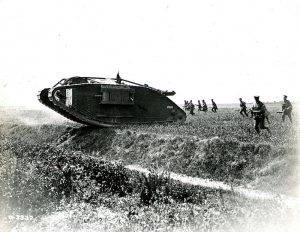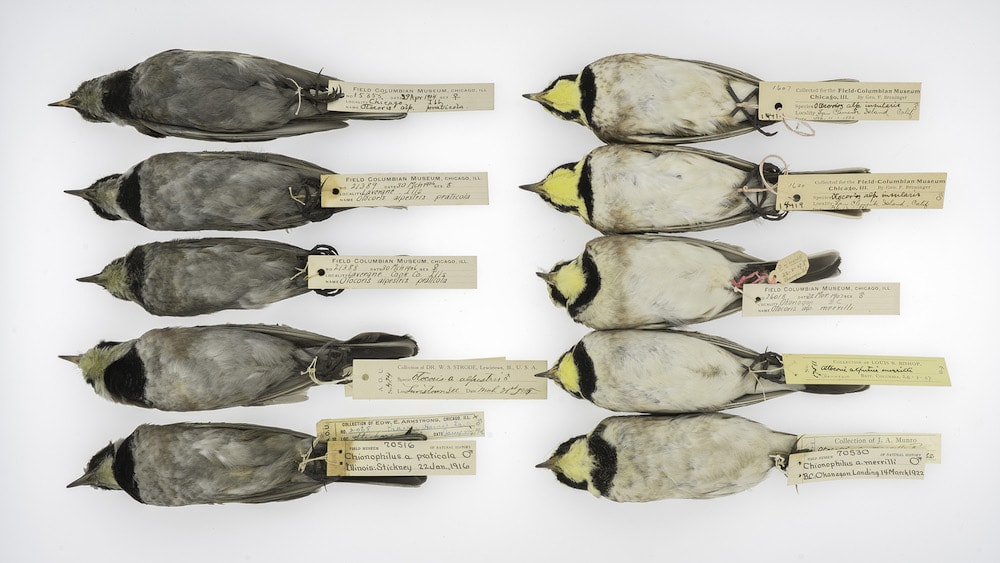The History Of Science History
Science isn’t a “triumphant march”—it’s sloppy, messy, and full of stops and starts. Meet the people who tell that story.
On October 4, 1957, Americans were shattered when Sputnik 1 launched into orbit. Fears and anxieties flared, and the space race was launched.
“For us, it was one of the achievements that will show that we beat Americans in technology,” said Sergei Khrushchev, son of former Soviet Premier Nikita Khrushchev, in a 1997 interview with Science Friday.
And to Americans, “It basically broke down the door—the psychological barrier—of space,” said James Oberg, an author and former space engineer, in the same 1997 interview. “And it terrified, goosed, prompted, impelled the United States to…pour money into projects that never would’ve been funded under any other conditions.”
Scientific and technological advancement is entwined with “not just our cultural development, but our sense of ourselves,” Karl Appuhn, an associate professor at NYU, tells SciFri by phone (full disclosure: this writer took a class of his). “It’s integral to the way that Americans think of themselves collectively.” And as often happens in the pursuit of rapid advancement, the tide turns its attentions backwards—and historians of science are having a moment. Here at Science Friday, we’ve been turning to historians of various branches of STEM subjects to lend insight to current science news—Alex Wellerstein, who studies nuclear history, lent perspective on the current tensions with North Korea, and Garrick Hileman, a researcher and economic historian of alternative currencies, joined us to explain the hubbub around bitcoin.
“Science and technology are so integral to the way our own society functions that suddenly people are interested and the field,” says Appuhn, who works on environmental history and the history of science, technology, and medicine. “It’s important to maintain our position as the preeminent nation of science and technology.”
But what exactly is a science historian? What does that discipline look like? And why does it matter, both to history and to science?
“I’m not even sure that my mother knows what I do,” says Robert J. Malone, executive director of the History of Science Society (HSS). “Historians are confused because they’re not quite sure if we’re historians or scientists. And then scientists—I think for maybe some justifiable reasons—are leery, because what we’re doing is looking at practice and looking at how they do things, and I think that can make individuals uncomfortable.”
Around the 1870s, universities began to separate and departmentalize the sciences and humanities—a rift that deepened as the country grappled with the “horrors” of technological advancement during World War I, explains Malone. When George Sarton, a refugee from Belgium, arrived in the United States in 1915, “he was dissatisfied in seeing science and the humanities as separate entities,” says Malone. He believed that we were “stripping science of its humanity, and he wanted to put that back in. He had a grand plan for this.

Part of that “grand plan” was the development of the history of science journal Isis, and the formation of the History of Science Society. But if you walked around the room in one of those earliest gatherings, according to Appuhn and Malone, you would likely meet a handful of people who were primarily seeking an account of their own work—physicists, astronomers, chemists, a philosopher or two, and mathematicians like Sarton—but very few actual historians. The first science history course in America was on the history of chemistry at Harvard in 1890.
But it wasn’t until the 1950s and ‘60s, with the publication of Thomas Kuhn’s The Structure of Scientific Revolutions (which argues that science is not necessarily cumulative, but rather operates as a “series of peaceful interludes punctuated by intellectually violent revolutions”) that the field truly grew. Malone estimates that there are about 45 graduate programs in the history of science today.
From today’s perspective, it looks like Sarton’s “grand idea” worked. But as the field swells, what can scientists learn from it?
“I worry that economic historians tend to sound like they have an axe to grind, and…I may sound like that as well,” says Garrick Hileman, a researcher and economic historian of alternative currencies. “But I think it is frustrating [for] economic historians to feel like their work is not getting the attention it deserves. Hileman isn’t alone. Many of the science historians interviewed for this article, while stressing that it was not a blanket statement, implied the need to argue for their discipline—and one method has been to demonstrate that the history of science is good for science itself.
Examples abound. In an Isis article titled “How Can History Of Science Matter To Historians,” the authors draw upon the first experimental research in tissue cultures by Ross Granville Harrison in the early 1900s, and how a graduate student discovered that Harrison temporarily worked next to the bacteriologists, who imparted essential information on maintaining aseptic conditions. And at the Field Museum in Chicago, photo historian Carl Fuldner worked with scientists to photograph and analyze the soot on the feathers of birds collected in the early 1900s, allowing researchers to trace the amount of black carbon in the air over time.

And what can history tell us about the rapidly evolving state of bitcoin and alternative currencies? Garrick Hileman deliberately chose to pursue a doctorate degree in economic history rather than a standard economics program, and he worked in Silicon Valley and in financial technology for 10 years prior to graduate school. Now, he’s developed a course at the University of Cambridge on blockchain technology and the history of alternative currencies.
[This cryptocurrency could be the answer to bitcoin’s privacy problems.]
“When I saw bitcoin in 2011 and first got interested in it, I didn’t just see it as strictly from an economics prism,” Hileman says. “I saw it also from a tech platform perspective, and I think that’s something that allowed me to see more what it could be than I think my fellow economists or economic historians could. It wasn’t just a currency or alternative money; it was a technology platform, a database, a system that could do a whole variety of things, and couldn’t simply be reduced to gold standard 2.0 and dismissed accordingly.”

And in order to understand a “multidimensional” concept like bitcoin, he looks to the past, drawing upon another “success story” of an alternative currency: merchant tokens. In searching for a historical parallel between bitcoin and the past, many economists have looked to the “free banking” period in the U.S. when states and institutions could issue their own currency, Hileman explains. But he recalled a lesser-known and longer-lived episode in the U.K., when 18th century merchants (think butchers, bakers, and candlestick makers, literally) took it upon themselves to create coins out of various materials in order to solve the “big problem of small change,” when not enough small coins were officially produced to facilitate smooth commerce.
“The case of merchant tokens opened my eyes to the possibility that bitcoin wasn’t necessarily doomed to die quickly, as many [economists] predicted when they first started writing about bitcoin in 2013,” Hileman says. Now, he is collecting materials on the history of the Cypherpunk movement in hopes of eventually piecing together a history of the origins of cryptocurrencies.
And for those searching for an even more tangible offering from science historians, consider the work of Naomi Oreskes, a geologist and historian at Harvard who the New York Times has said is “fast becoming one of the biggest names in climate science”—as a historian, not a scientist.

But her tools aren’t graphs or measuring instruments; they’re documents. In the early 2000s, the general public believed that scientists were divided over whether humans were primarily responsible for climate change (and Pew reports that as of 2016, only 27 percent of U.S. adults believed that nearly all scientists agree that climate change is caused by humans). So, Oreskes looked at the papers. She conducted a review of 928 published, peer-reviewed papers containing the word “climate change.” Not a single paper dissented from the opinion that humans were the main driving cause of global warming. She published her findings in a paper called “The Scientific Consensus on Climate Change” in Science.
When Sputnik launched into orbit, the psychological fear of being left behind scientifically gripped Americans with an unprecedented intensity. But now, science historians argue that the discipline is more important—and more resonant—than ever before. “Time seems to favor history of science,” says Malone.
“Typical science students will look at texts, and they see the triumphant march of science, that so-and-so discovered this, which led to this, and here we are today,” he explains. “Historians of science see the failures. We look at the messy part of science and how there were so many dead ends and experiments that didn’t work. And it makes science much more real than it would be otherwise.”
Typical science students will look at texts, and they see the triumphant mark of science, that so-and-so discovered this, which led to this, and here we are today. Historians of science see the failures.
Thanks to the “cultural power of science,” says Appuhn, “there’s this way in which science becomes a black box, and we don’t get to see how it works.”
But when it comes to scientists, says Malone, they may be a bit more curious than the average person, but “they’re not in silos. Scientists aren’t special creatures independent of how humans operate. And what we try to do is humanize science and help people see that scientists are just like the rest of us…I think it’s really important that we help the public see that science is a process, that is being practiced by humans, and it has foibles, like so many other human processes,” he says. “Nevertheless, it’s pretty powerful, what science is able to do.”
Johanna Mayer is a podcast producer and hosted Science Diction from Science Friday. When she’s not working, she’s probably baking a fruit pie. Cherry’s her specialty, but she whips up a mean rhubarb streusel as well.